Daphne Cockwell Health Sciences Complex, Ryerson University, Toronto
Connecting students to the vibrancy of Toronto’s downtown core while bringing together educational and residential functions, Ryerson University’s 28-storey Daphne Cockwell Health Sciences Complex is a new hub of academic excellence and student life.
The nearly 300,000-square-foot tower is located on the eastern edge of Ryerson’s campus, just around the corner from Yonge and Dundas. The Perkins&Will-designed building was opened in August 2019, and is part of a campus master plan developed in 2008 to guide Ryerson’s expansion through new development and renovations.
“Daphne Cockwell Health Sciences Complex demonstrates Ryerson University’s position as active city-builders. We found a wonderful fit with Ryerson, where our teams were both incredibly motivated to work alongside communities and stakeholder groups to create a state-of-the-art living and learning space. It was critical that we introduce a building that not only connects to, but also enhances, the fabric of the surrounding downtown neighbourhood,” says Andrew Frontini, design director of Perkins&Will’s Toronto and Ottawa studios. “This type of consolidated yet integrated design is a vibrant and viable solution for urban campuses of the future.”
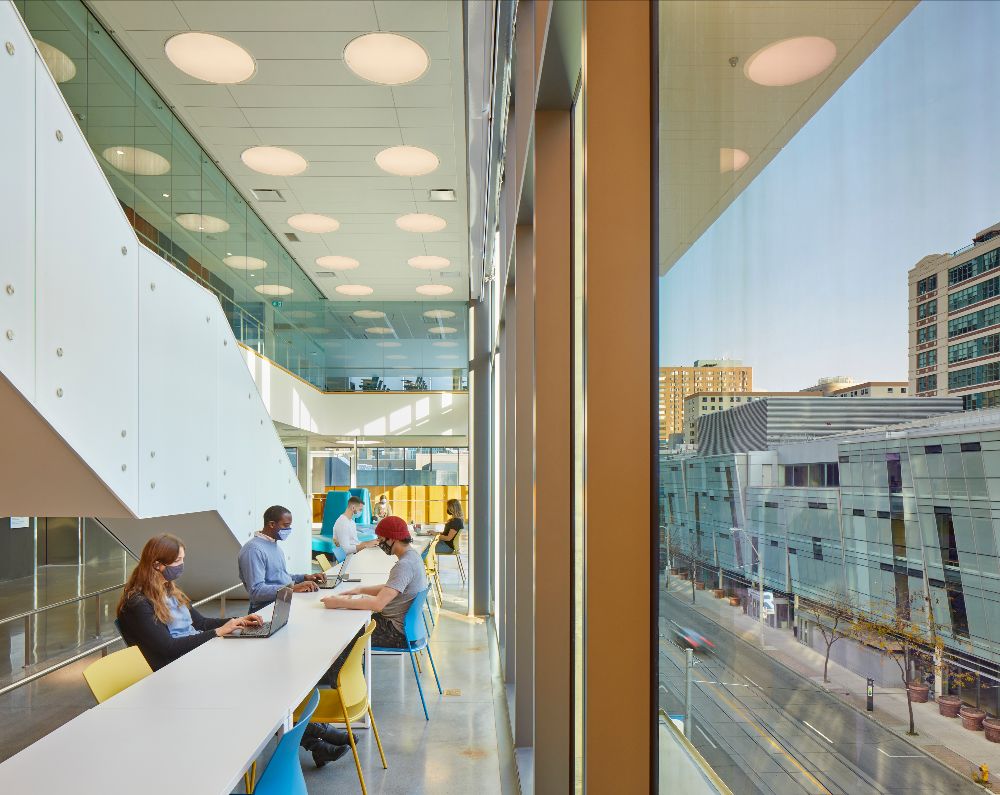
Recognizing the need for an integrated approach that celebrates density, student life, community, and learning, Perkins&Will’s Toronto and Vancouver studios conceived a vertical campus typology—the first of its kind for Ryerson University. The Complex has become a new gateway into the campus from the east side.
Clad in white aluminum panels and accented with vibrant orange, the striking façade is a bold addition to Toronto’s dynamic skyline. Adapting Toronto’s prevalent podium-tower model, the building’s volumes have been lifted to create an active streetscape and continuous public spaces from the ground level to the roof, encouraging students to engage and collaborate with one another.
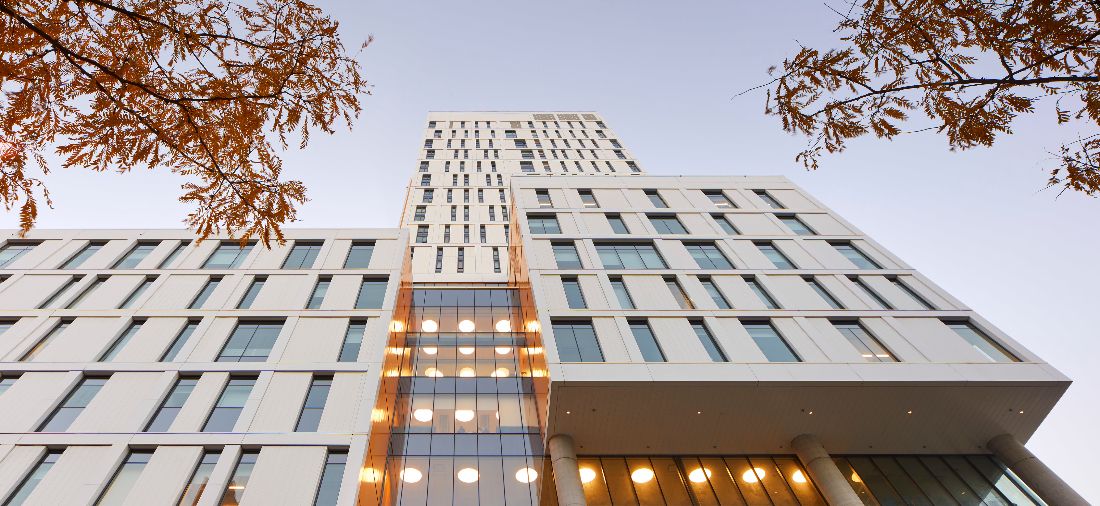
The façade’s orange threads visually represent the public spaces that are woven throughout the building, putting its activities on display.
“The DCHS Complex uniquely expresses public space throughout the building, creating new connections to the adjacent campus at the ground floor and illustrating student life in a vertical axis. This expression reinforces the concept of a vertical campus, successfully integrating the academic and social lives of Ryerson students,” says Ryan Bragg, principal of Perkins&Will’s Vancouver studio.
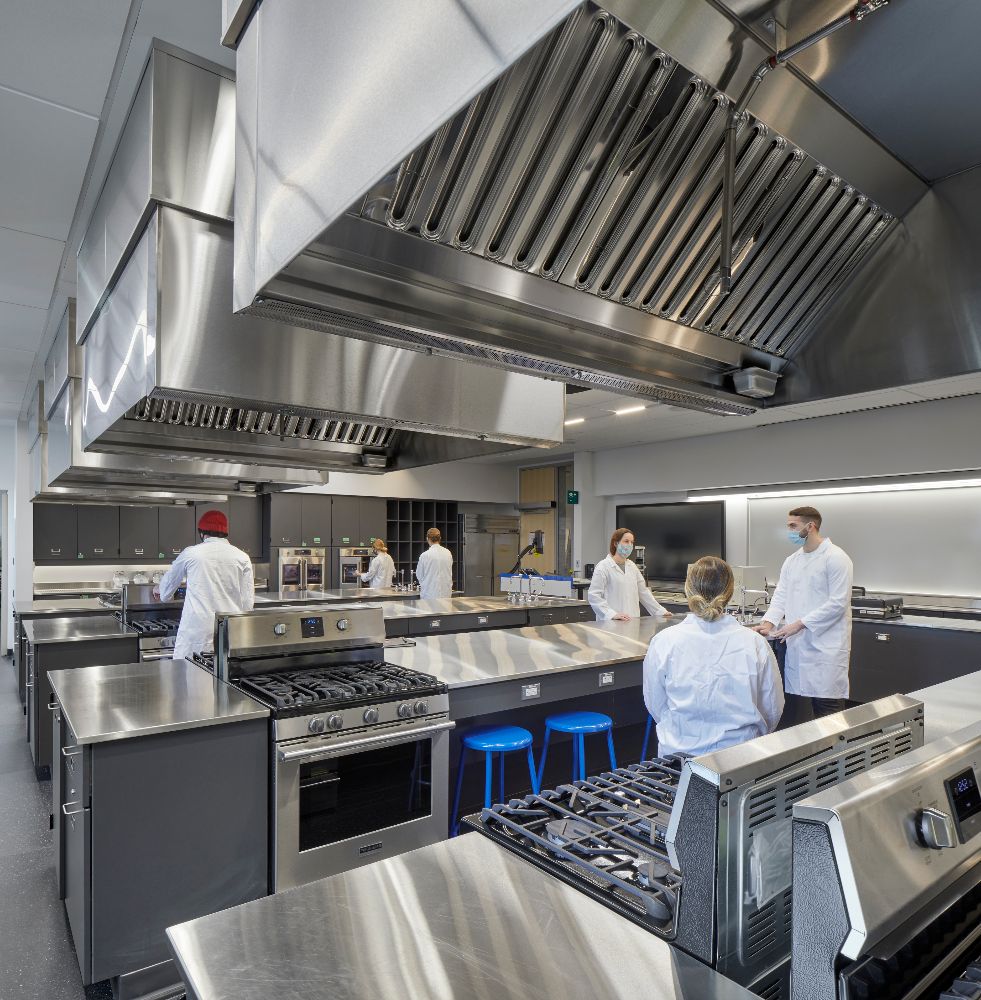
The first eight storeys of the building Integrate four academic departments: the Schools of Nursing, Midwifery, Nutrition, and Occupational and Public Health. The programs are supported by a variety of new classrooms, teaching kitchens, and labs to enhance students’ learning experience.
The building also features a state-of-the-art Digital Fabrication lab, visible from the public realm, along with flexible research facilities and university administration offices. Rising above 18 storeys, residence dorms house up to 330 students, further enriching campus life.
At pedestrian level, the public atrium becomes an important contribution to the city. With a café and spaces to socialize and study, the atrium animates Church Street and creates new porosity with connections that link the city to the heart of the campus. Large windows invite natural light into the atrium, creating seamless indoor-outdoor connections.
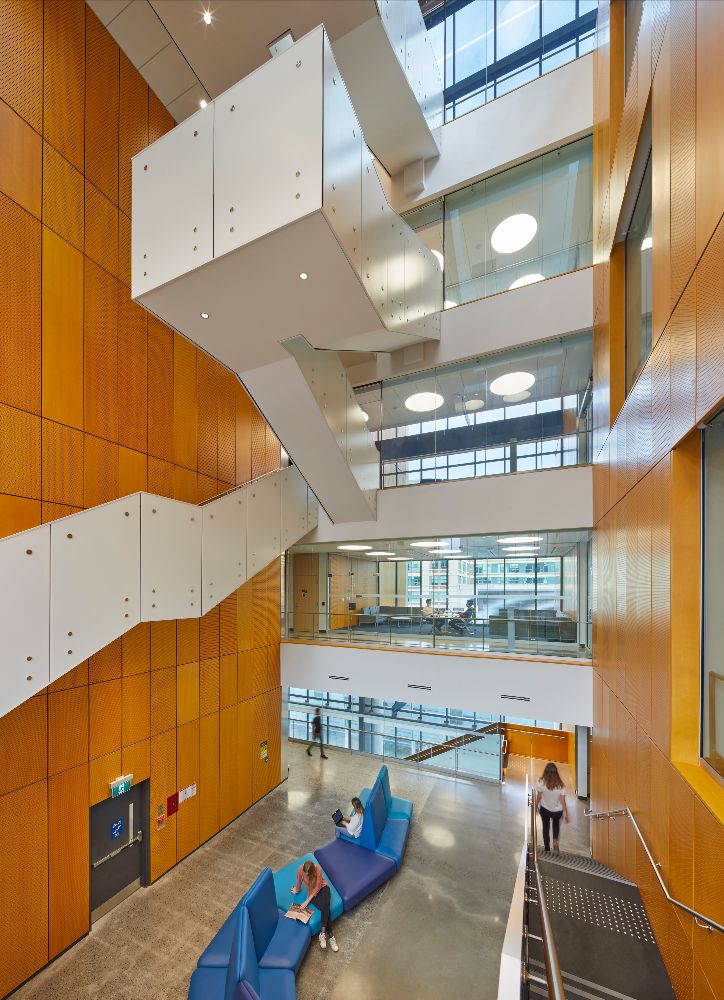
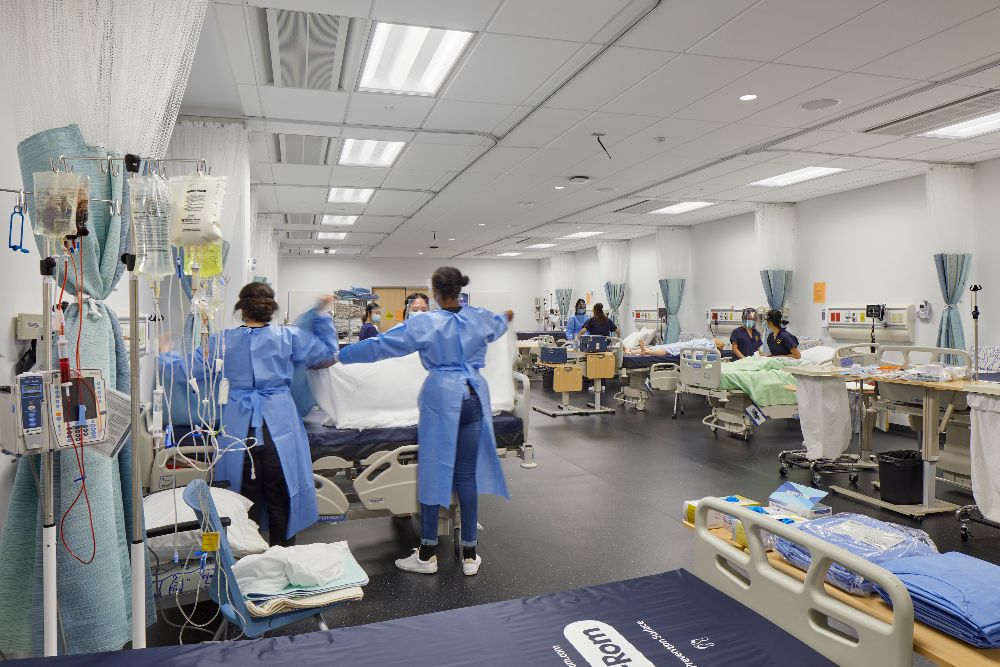
Beyond traditional pedagogies, the Complex is a place for students to learn, collaborate and innovate in new ways. It is outfitted with machine-learning systems and sustainable technologies, such as a green roof that acts as an urban farm to provide fresh produce to the ground-floor cafe, and a greywater system for faucets, toilets, and showers.
When designing the Complex, Perkins&Will referenced its Precautionary List, an extensive database of hazardous and harmful materials, ensuring the Complex was created with materials known for being safe and having a low environmental impact. Designed to achieve LEED Gold Certification, it is expected to use 32 percent less energy and consume 35 percent less potable water than traditional construction.

Another feature is a metering and monitoring system that allows students in residences to view their energy and water consumption online. The program also assists the University’s Living Laboratory research program, aimed at developing smart and ongoing solutions for operations based on user-driven research.
“The DCHS Complex is the most ambitious example of sustainable design at Ryerson and it is intended to be a catalyst for continually improving performance. We designed this project to be a great project not just at the opening, but to be an on-going resource for Ryerson’s researchers to study. The lessons learned from this building will make the next generation of buildings better,” says Max Richter, senior associate of Perkins&Will’s Vancouver studio.
